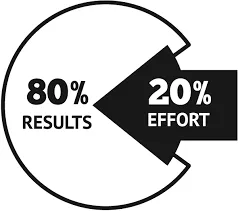KPIs of Success
In my prior article about testing , I mentioned that one of the latter stages of that process is measurement and reporting. Setting goals for your program is imperative – you work hard to develop an exceptional experience for your audience, resulting in loyalty and advocacy. But if you aren’t establishing and keeping an eye on the right KPIs, how can you have confidence that you’re headed in the right direction?
We are all very familiar with metrics like open, clicks, transactions, conversions, etc.. However, what if I told you that there is a better way to look at these metrics (and new ones to discover?) Let’s dive in!
Now, there’s nothing inherently wrong with campaign level metrics, but we want to understand program health holistically. Monitoring opens and clicks can help identify particular issues with deliverability, for instance, and can be directional in looking at year over year performance, but what are you learning about your customers?

For many of our clients, 15-20% of their audience provides 80% of revenue, and 40-60% of customers are dormant. When you have even that basic level of insight into your own audience, you can create and measure a program that extracts more value from that 15-20%, and encourages the next best segment to join that 15-20%. Remember, we’re sending campaigns and building a relationship with PEOPLE, not inboxes. Let’s have a laser focus on our customers.
Okay, so what metrics are valuable at the customer level?
Here are a few of my faves, with a caveat: I understand that there are a lot of organizations where marketers don’t have easy access to customer level data. If you have a wish list for your tech stack and the way your systems share data, access to customer level data/creating a single customer view should be at the top of that list.
1. Customer Lifetime Value
This metric looks at the health of your program over time, as measured by revenue. We expect there to be changes in campaign performance based on seasonality and content, among other factors, but we should see revenue patterns across time, associated with particular groups of subscribers (e.g. high spenders, medium spenders, low spenders, non-customers). This is a great metric to look beyond campaign level interactions which can change over time.
2. Customer Retention and Tenure
Another valuable metric to examine is churn and tenure. How often are we losing subscribers? How long have our subscribers been on the list? How soon do they become dormant after subscribing? One of our clients missed their revenue goals on an annual campaign and asked us to research the root cause. We discovered that even though their list size was the same, the underlying subscribers had changed. They’d lost part of their valuable audience, and newer subscribers simply didn’t have the same purchase behavior (among other demographic changes). Their model relied on the stability of their audience, which had changed unbeknownst to them, as they had been focusing on campaign level metrics and top level list size. Our team was able to help them develop a new forecasting model, and give them ideas on how to continue to examine shifts in their audience into the future.
3. Consistency
You may have heard the phrase: Six of one, a half dozen of the other. But if not, here’s a brief explanation:

In my testing post, I mentioned digging deeper (especially if things appear identical on the surface). The same should be done with your customer engagement KPIs. Imagine two customers with the same number of unique opens – on the surface, they’re equally active and could be included in a simple segment looking for those who were active within the past six months. However, what if one customer opened six times in the first two weeks, and hadn’t opened since? And the other customer opened once a month, consistently?
In this case, six of one does IS NOT a half dozen of the other. These are two very different customers, and tracking open metrics at a customer level – especially if you’re trying to identify your active base – is a must.
Hopefully, as data is easier to access and analyze, marketers will have an even larger array of metrics that will give insight into true program performance. Until then, ask yourself if the KPIs you’re relying on are clear, accurate and prescriptive – both to identify issues and also to chart program performance at a campaign AND subscriber level.
